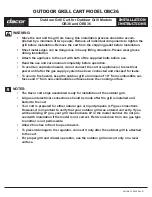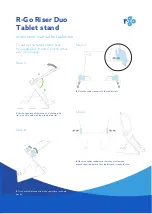
6/10/13 – 11
8
Returning From a Limb-Walk
Unlike a DdRT climbing system, an SRT climbing
system (including the Rope Wrench climbing system)
does not allow the climber to hoist oneself up the rope
with a 2:1 mechanical advantage. This can make
climbing in certain situations more difficult. By placing a
pulley on the standing line, the climber can create a 3:1
mechanical advantage in the system (see
Figure 8
below.) This allows for a less strenuous return from a
steep limb walk or section of the tree.
Installation and Use.
Before descending, install a
pulley above the Rope Wrench using a desired
method. Pass the tail end of the climbing rope
through the pulley. Begin the descent or limb-walk
as usual, but keep the tail end of the rope within
reach. To ascend, simply pull the tail end of the
rope. This is much like traditional DdRT climbing,
but with a 3:1 mechanical advantage instead of 2:1.
NOTICE: PRACTICE PULLEY INSTALLATION
As with all aspects of climbing, the climber should
practice and fully understand the desired method of
pulley installation before attempting anything at height.
Figure 8. An example of a properly executed 3:1 mechanical advantage pulley system





























